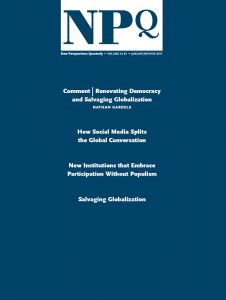Liminal spaces : Making connections for healthcare professionals

Discovering this paper (on Twitter) by Brown et al (2017) and how elegantly it presents the ambivalent world of people recovering from ME, a contested and controversial condition. Encountering it on social media has led to me feeling compelled to write this blog to see if it elicits some response from other healthcare professionals. As a recovering nurse educator I have been in hiding for a number of years but this paper has encouraged me out of my cave.
I am always drawn to any papers that mention liminality. I came across the work of Turner and Van Gennep nearly 20 years ago when I was researching the experiences of people with diabetes and their encounters with healthcare professionals. I undertook the research as a diabetes specialist nurse as I wanted to understand why I disliked going to the outpatient clinics and wanted to uncover what might be going on for the people with diabetes. I was keen to then unpack what might be expected from healthcare professionals – privileging the voice of the patient rather than assume they ought to “fit in” with the services we delivered. In interviewing people three times over 18 months I began to realise that their experience was of a whole lot of hard work that was all about normalising and making sense of living with diabetes. However just when they thought they had got it sussed and sorted they would go to the clinic and those encounters would then destabilise, and they were made to feel uncertain and doubtful of their ability to “do all the stuff they were supposed to do.”
In my quest for an explanatory framework and a theory to hang my work on I came across the work on transitions and it really helped make sense of what was going on in my data. Unfortunately I never did complete the work and have languished on the “failed to get her doctorate” since 2005 but I have remained intrigued and energised by how the concept of liminality helps make sense of people’s experiences of illness and how the constructs of healthcare amplify and contribute to this state of being “betwixt and between” the world of wellness and illness. The implications for healthcare professionals and healthcare services are enormous and I am interested in how we might create models and frameworks for care giving that acknowledges how liminality can be a difficult place for people to inhabit. It occurs to me that an understanding of this state of being is an important issue and that roles and relationships would be much more supportive and constructive if it was explicitly discussed. Unfortunately contemporary models of healthcare delivery, with local guidelines and all conditions needing to be codified and co modified, makes me suspect that we are making it worse for folk by needing to fit people into diagnostic categories and care pathways. It strikes me that this paper and many others suggest we should be helping to identify individual needs and interventions that will help people achieve their desired outcomes rather than some professional measurements of success. Reading this paper raises so many questions about attitudes and beliefs within healthcare professionals and that it should be important reading for many.
One of the major challenges facing healthcare providers at the moment is the increasing complexity of people’s healthcare needs. Sociological concepts such as liminality help illuminate what might be going on for patients and the challenge is to see how we can shape services that alleviate rather than exacerbate the impact it might have on a person’s wellbeing. Debate and discussion around how we might respond to these insights would be an important next step in relation to shaping services that are more person-centred, more responsive and less likely to intensify uncertainty and ambiguity. It would be great to see imaginative and innovative healthcare professionals share approaches that they have implemented and bring together theory in practice.
Kralik and van Loon’s (2009) work has a great deal of relevance here and I would encourage healthcare professionals to begin to explore connections and associations across research into different conditions. Lateral and creative thinking are key to helping healthcare services develop to help people adapt and adjust to their new lived experience in a way that does not diminish agency and autonomy. I know it is demanding and stressful but I am confident that cross fertilisation of knowledge can make a real difference to how professionals deliver the care they do, and that helping people learn and discuss these issues is important for professional development and effective improvements in services.
I have continued to be excited and energised by how the concept of liminality, transitions and thresholds can make a real difference to making sense of healthcare services for people with long term conditions. Papers like this could make a real difference in adding to the knowledge that professionals might utilise in their practice. However with the cut backs in CPD I do wonder where the conversations might be had that might facilitate the developments that could make a difference for folk.
Sue Spencer is a nurse by professional background and worked for many years as a nurse educator in higher education. She has made a professional commitment to helping people navigate life transitions and is particularly interested in how creative and expressive arts can help facilitate the process. Her professional focus is in working with professionals working with people with life limiting conditions and encouraging a person centred approach that nurtures well-being and fosters agency and autonomy.





